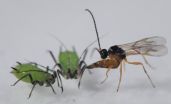Financial incentives 'can undermine motivation and worsen performance'
Analysis: When financial incentives do more good than harm: A checklist
2012-08-15
(Press-News.org) Financial incentives (pay for performance) schemes for health professionals "can undermine motivation and worsen performance" warn US experts in an editorial published on bmj.com today. They also say that gaming of the system is rife.
Their views are published alongside an analysis of the positive and negative effects of financial incentives led by Professor Paul Glasziou of Bond University in Australia.
Glasziou and colleagues describe the current evidence on the effectiveness of financial incentives as "modest and inconsistent" and say that, although reward schemes can sometimes improve the quality of clinical practice, they may also be an expensive distraction.
Yet such schemes have already been adopted as a key strategy by the NHS in the United Kingdom, Medicare in the United States, and many private insurers, based on the tenet that people respond to rewards.
Glasziou and colleagues have therefore devised a checklist to assess the potential benefits and harms of pay for performance schemes before they are implemented.
"While some commentators and policy makers believe financial incentives can reduce the delay between new evidence and changes to clinical practice, there are many pitfalls," they write. "The proposed checklist is aimed at guiding implementers of financial incentives past some of these pitfalls."
In the accompanying editorial, Professors David Himmelstein and Steffie Woolhandler from City University of New York and Professor Dan Ariely from Duke University in North Carolina argue that "questionable assumptions" underlying pay for performance schemes cast doubt over their clinical effectiveness.
They believe that offering financial incentives to doctors, rather than enhancing their intrinsic motivation, "may reduce their desire to perform an activity for its inherent rewards (such as pride in excellent work, empathy with patients)."
They say they are worried that pay for performance "may not work simply because it changes the mindset needed for good doctoring." However, they conclude that "if such schemes must be envisaged, it is essential that their likely benefit is rigorously considered before their implementation. Glasziou and colleagues' checklist provides a salutary guide to such consideration."
INFORMATION: END
ELSE PRESS RELEASES FROM THIS DATE:
2012-08-15
Certain medical students may be more likely to stay in their own countries or work in rural areas of their own countries when they qualify as doctors, suggests a study published on bmj.com today.
Given that many low income countries have insufficient doctors to meet their needs, particularly in rural areas, the authors suggest that policy makers could use this evidence to adjust entrance criteria for medical schools that favour subsequent practice in less well served areas of their country.
Previous studies have shown that, in high income countries, doctors with rural ...
2012-08-15
A paper published on bmj.com today suggests that over 1000 people have committed suicide due to the 2008-2010 economic recession in the UK (846 men and 155 women).
Suicides began to rise in the UK in 2008 following 20 years of decline - suicides rose 8% among men and 9% among women in 2008, compared to 2007. And even though suicides did begin to fall in 2010 figures were still above the 2007 averages.
Previous studies have concluded that unemployment does increase the risk of suicide and non-fatal self-harm but while suicides tend to increase during economic downturns, ...
2012-08-15
In a cautionary editorial alongside a related article in today's issue of the British medical journal BMJ, leading experts in health policy and behavioral economics argue that pay-for-performance (P4P) schemes – which financially reward doctors and hospitals for hitting specific, numerical targets in such matters as preventing hospital readmissions or prescribing certain drugs – are likely to do more harm than good.
Such schemes are being adopted as a key component of the Accountable Care Organization strategy mandated by the 2010 health reform and are now part of the ...
2012-08-15
In a major breakthrough, an international team of scientists has proven that addiction to morphine and heroin can be blocked, while at the same time increasing pain relief.
The team from the University of Adelaide and University of Colorado has discovered the key mechanism in the body's immune system that amplifies addiction to opioid drugs.
Laboratory studies have shown that the drug (+)-naloxone (pronounced: PLUS nal-OX-own) will selectively block the immune-addiction response.
The results – which could eventually lead to new co-formulated drugs that assist patients ...
2012-08-15
When a carnivore becomes extinct, other predatory species could soon follow, according to new research. Scientists have previously put forward this theory, but a University of Exeter team has now carried out the first experiment to prove it.
Published today (15 August 2012) in the Royal Society journal Biology Letters, the study shows how the demise of one carnivore species can indirectly cause another to become extinct. The University of Exeter team believes any extinction can create a ripple effect across a food web, with far-reaching consequences for many other animals. ...
2012-08-15
CAMBRIDGE, MA -- From an engineer's perspective, plants such as palm trees, bamboo, maples and even potatoes are examples of precise engineering on a microscopic scale. Like wooden beams reinforcing a house, cell walls make up the structural supports of all plants. Depending on how the cell walls are arranged, and what they are made of, a plant can be as flimsy as a reed, or as sturdy as an oak.
An MIT researcher has compiled data on the microstructures of a number of different plants, from apples and potatoes to willow and spruce trees, and has found that plants exhibit ...
2012-08-15
It's become a sport of sorts, predicting the low point of Arctic sea ice each year. Expert scientists with decades of experience do it but so do enthusiasts, whose guesses are gamely included in a monthly predictions roundup collected by Sea Ice Outlook, an effort supported by the U.S. government.
When averaged, the predictions have come in remarkably close to the mark in the past two years. But the low and high predictions are off by hundreds of thousands of square kilometers.
Researchers are working hard to improve their ability to more accurately predict how much ...
2012-08-15
Girls with Attention Deficit Hyperactivity Disorder (ADHD) – and their families – often look forward to the likely decline in visible symptoms such as fidgety or disruptive behavior as they mature into young women.
However, new findings from UC Berkeley caution that, as they enter adulthood, girls with histories of ADHD are more prone to internalize their struggles and feelings of failure – a development that can manifest itself in self-injury and even attempted suicide.
"Like boys with ADHD, girls continue to have problems with academic achievement and relationships, ...
2012-08-15
An intensifying Tropical storm called Kai-Tak (locally known as Helen) is causing more rain in the Philippines as it passes over northern Luzon. The Philippines have had a very wet month with the capital of Manila experiencing massive flooding earlier this month. NASA's TRMM satellite identified where the heavy rain was falling.
Kai-tak has caused another day of warnings in the Philippines. On August 14, Public storm warning signal #1 is in effect for these provinces in Luzon: La Union, Nueva Ecija, Pangasinan, Rest of Aurora, and Tarlac.
In addition, Public storm warning ...
2012-08-15
Tropical Storm Hector is battling wind shear over the open waters of the Eastern Pacific Ocean, and NASA satellite data shows that has been affecting its organization and rainfall rates.
The Tropical Rainfall Measuring Mission satellite known as TRMM is managed by both NASA and the Japanese Space Agency. From its orbit in space, TRMM's instruments can estimate rainfall from tropical cyclones.
The TRMM satellite captured rainfall rates from Tropical Storm Hector on August 14, 2012 1:28 a.m. EDT. TRMM data showed that Hector had a small area of moderate to heavy rainfall ...
LAST 30 PRESS RELEASES:
[Press-News.org] Financial incentives 'can undermine motivation and worsen performance'
Analysis: When financial incentives do more good than harm: A checklist



